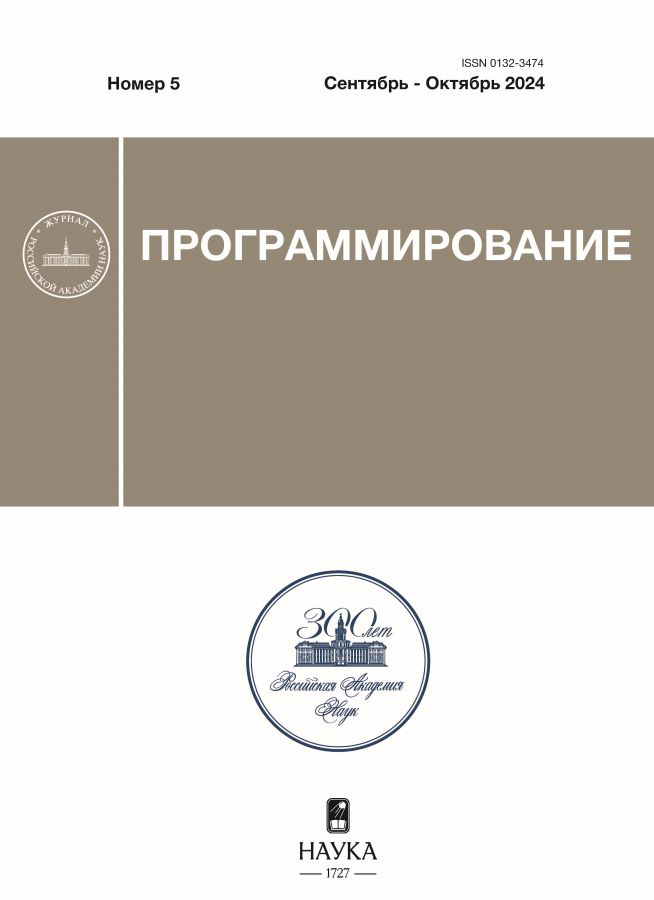A universal algorithm for discretizing bichromatic two-dimensional graphic codes
- Авторлар: Trubitsyn A.A.1,2, Shadrin M.V.2, Holkin S.I.3
-
Мекемелер:
- Ryazan State Radio Engineering University named after V.F. Utkina
- Kvantron Group LLC
- LLC “Operator-CRPT”
- Шығарылым: № 5 (2024)
- Беттер: 42-53
- Бөлім: COMPUTER GRAFICS AND VISUALIZATION
- URL: https://j-morphology.com/0132-3474/article/view/683331
- DOI: https://doi.org/10.31857/S0132347424050044
- EDN: https://elibrary.ru/OLSFZO
- ID: 683331
Дәйексөз келтіру
Аннотация
Mathematical foundations and algorithms for recognizing bichromatic two-dimensional graphic codes, regardless of their type (QR codes, DataMatrix, GridMatrix, etc.) are presented. The stages of achieving the result include detecting the code, localizing it within an arbitrary quadrilateral, transforming the quadrilateral to a canonical square, constructing a grid of elements (modules) of the square code, and filling it with a sequence of bits. It is shown that perspective transformation formulas make it possible to transform localized quadrangular regions to canonical squares with an acceptable error level for further processing. A flat grid of square code elements is formed based on the search for extrema of the derivatives of the pixel intensity distribution of the square image along the axes x and y. The algorithm for filling grid cells (code modules) with a sequence of zeros and ones uses information about the average intensity of each such cell. At the end of the paper, the algorithms are tested on a variety of real images of two-dimensional codes, and the limitations of the proposed algorithms are examined.
Толық мәтін
Авторлар туралы
A. Trubitsyn
Ryazan State Radio Engineering University named after V.F. Utkina; Kvantron Group LLC
Хат алмасуға жауапты Автор.
Email: assur@bk.ru
Ресей, 59/1 st. Gagarina, Ryazan, 390005; 28a st. Engelsa, room. H2, Ryazan, 390010
M. Shadrin
Kvantron Group LLC
Email: m.shadrin@kvantron.com
Ресей, 28a st. Engelsa, room. H2, Ryazan, 390010
S. Holkin
LLC “Operator-CRPT”
Email: assur@bk.ru
Ресей, 15 Rochdelskaya st., building 16A, premises I, Moscow, 123376
Әдебиет тізімі
- Trubitsyn A.A., Shadrin M.V., Serezhin A.A. Localization of image fragments with high frequency intensity oscillation. Journal of Autonomous Intelligence. 2023. V. 6. № 2. P. 1–16.
- Trubitsyn A.A., Shadrin M.V. Obnaruzheniye, lokalizatsiya i transformatsiya dvumernogo graficheskogo koda (Detection, localization and transformation of two-dimensional graphics code). GraphiCon 2023: 33rd International Conference on Computer Graphics and Computer Vision, September 19–21, 2023, Institute of Control Problems. V.A. Trapeznikov Russian Academy of Sciences, Moscow, Russia. 2023. P. 509–516.
- Karrach L., Pivarciova E. Options to use data matrix codes in production engineering. Management Systems in Production Engineering. 2018. V. 26. № 4. P. 231–236.
- Yamaguchi et al. Code type determining method and code boundary detecting method. US Patent 2005/O121520 A1. 09.06.2005.
- Szentandrási I., Herout A., Dubská M. Fast detection and recognition of QR codes in high-resolution images. SCCG '12: Proceedings of the 28th Spring Conference on Computer Graphics March. 2013. P. 129–136.
- Lin J.A., Fuh C.S. 2D barcode image decoding. Mathematical Problems in Engineering. 2013. 2013: 848276.
- Heckbert P.S. Fundamentals of texture mapping and image warping [M.S. thesis]. Department of Electrical Engineering, University of California, Berkeley, Calif, USA. 1989.
- Gonzalez R, Rafael R. Digital image processing. NY: Pearson. 2018. 1168 p.
- Abramowitz M., Stegun I.A. Handbook of Mathematical Functions: With Formulas, Graphs, and Mathematical Tables. NY: Dover Publications Inc. 1965. 1046 p.
- Otsu N.A. Threshold Selection Method from Gray-Level Histograms. IEEE Trans. Sys. Man. Cyber. 1979. V. 9. № 1. P. 62–66.
- Koleda P, Hrčková M. Global and Local Thresholding Techniques for Sawdust Analysis. Acta Facultatis Technicae. 2018. Vol XXIII. No 1. P. 33–42.
- Trubitsyn A., Grachev E. Switching median filter for suppressing multi-pixel impulse noise. Computer Optics. 2021. V. 45. № 4. P. 580–588.
Қосымша файлдар















